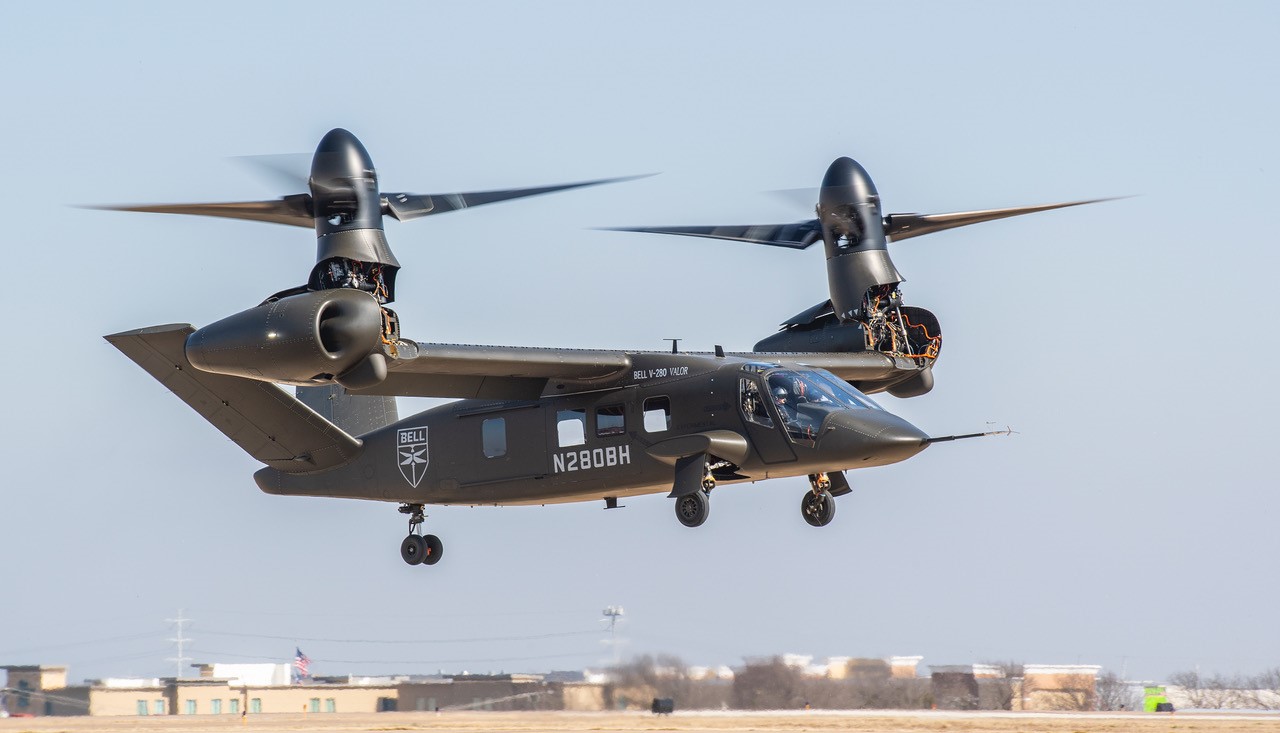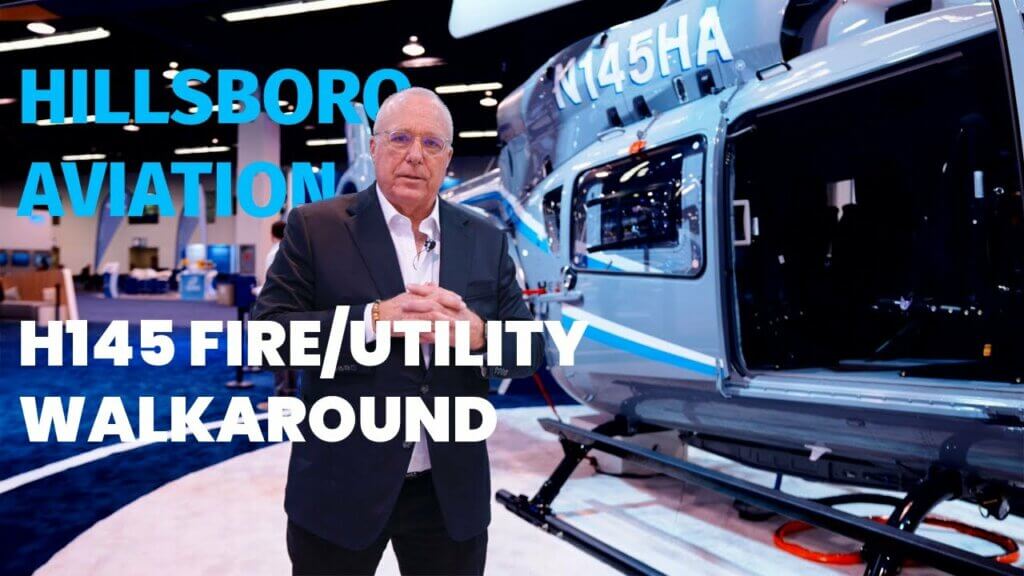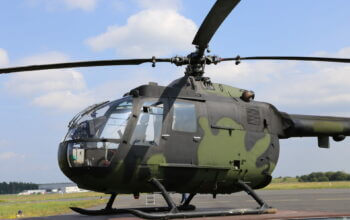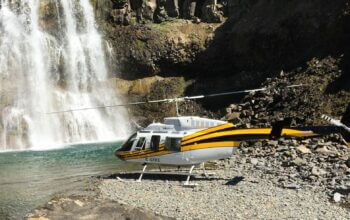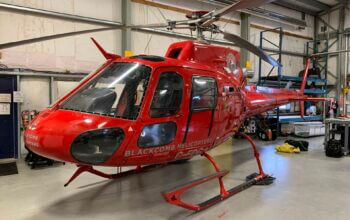Bell is preparing the V-280 for autonomous flight tests, having recently loaded the software for autonomous flight into the aircraft to begin the process of regression testing.

The OEM began these tests, which prove compatibility with the aircraft’s systems, in early December. Once complete, it will begin envelope expansion with the autonomy software, with the first autonomous flight targeted within “the next couple of months,” Ryan Ehinger, program manager of the V-280 Valor, told reporters during a recent media visit to the manufacturer’s facility in Fort Worth, Texas.
“Essentially there’ll be a lift to a hover . . . a conversion [to forward flight], fly around the pattern in cruise mode, and then return back and land autonomously,” he said of the first autonomous flight. The aircraft will be manned by two safety pilots during the initial experimental envelope expansion stage, as the software proves out its capability.
Bell is developing the V-280 under the U.S. Army’s Joint Multi-Role Technology Demonstration (JMR-TD) program. It will be the manufacturer’s submission for the upcoming Future Long Range Assault Aircraft [FLRAA] program, which seeks to provide a medium-lift assault aircraft to replace the UH-60 Black Hawk.
Having made its first flight in December 2017, the program has now recorded over 150 flight hours and 285 “operational” hours — which include preliminary runs and rotor turn time.
Bell recently received an extension to JMR-TD, which is allowing it to further explore structural integrity programs and expand the aircraft’s flight envelope.
“We continue to ring out everything we can wring out on the aircraft and expand that on load, and learn and identify what risks would or would not carry forward into a program,” said Ehinger. The extension also allows it to more fully explore the interaction between the pilots and the autonomous system, and much of this work is being performed in the aircraft’s systems integration lab (SIL).
“So for having a safety pilot on board, you have to make sure that the pilot can kick you out of the autonomous mode, so to speak, seamlessly,” said Ehinger. “That’s what [the flight test team] have been doing over the past months: making sure that the interactions between the pilot and the autonomous software — hopefully there shouldn’t need to be any — but if there are some, that that’s all seamless.”
The various elements developed for autonomous flight can also play a role in reducing pilot workload during manned flight through features such as hover hold, position hold, altitude hold, and attitude hold. “We’re spiraling in those advancements into the flying aircraft,” said Ehinger.
The flight test program met all Bell’s internal key performance parameters by early 2019, he added. These included a cruise speed of 280 knots, a radius of 229 nautical miles, high and hot (6,000 feet/95 F) hover out of ground effect performance, and low-speed agility.
“We’ve flown over 300 knots. We’ve demonstrated over the 229 nautical mile radius capability. We’ve demonstrated our level one agility,” said Ehinger.
Aside from testing the V-280’s autonomous capabilities, ongoing work includes integrating Lockheed Martin’s Pilotage Distributed Aperture Sensor (PDAS) system into the aircraft, demonstrating the V-280’s modular open systems architecture. The PDAS utilizes six infrared sensors around the aircraft to provide the pilots and crew chief with 360-degree vision around the aircraft through their head-up or multifunction displays.
“It demonstrates our ability to adapt and integrate that system into our existing cockpit within the JMR-TD period performance — and now be flying with it,” said Ehinger.
Throughout the program, the Army has been fully integrated into Bell’s systems, giving them full transparency and access to the program’s flight test and design data, and all its reports.
Seven pilots have now flown the V-280 — five Bell test pilots and two Army experimental pilots.
“We’ve had [the Army pilots] continuously being a part of the team . . . helping us prove things out prior to flight and then flying the aircraft as opportunities became available,” said Ehinger.
The aircraft had flown on four days of the previous seven before the media visit, and Ehinger claimed this showed the capability of the V-280 to enter flight test periods.
“It’s performing extremely well and it’s proving out to be a very reliable aircraft configuration [and] design,” he said.





